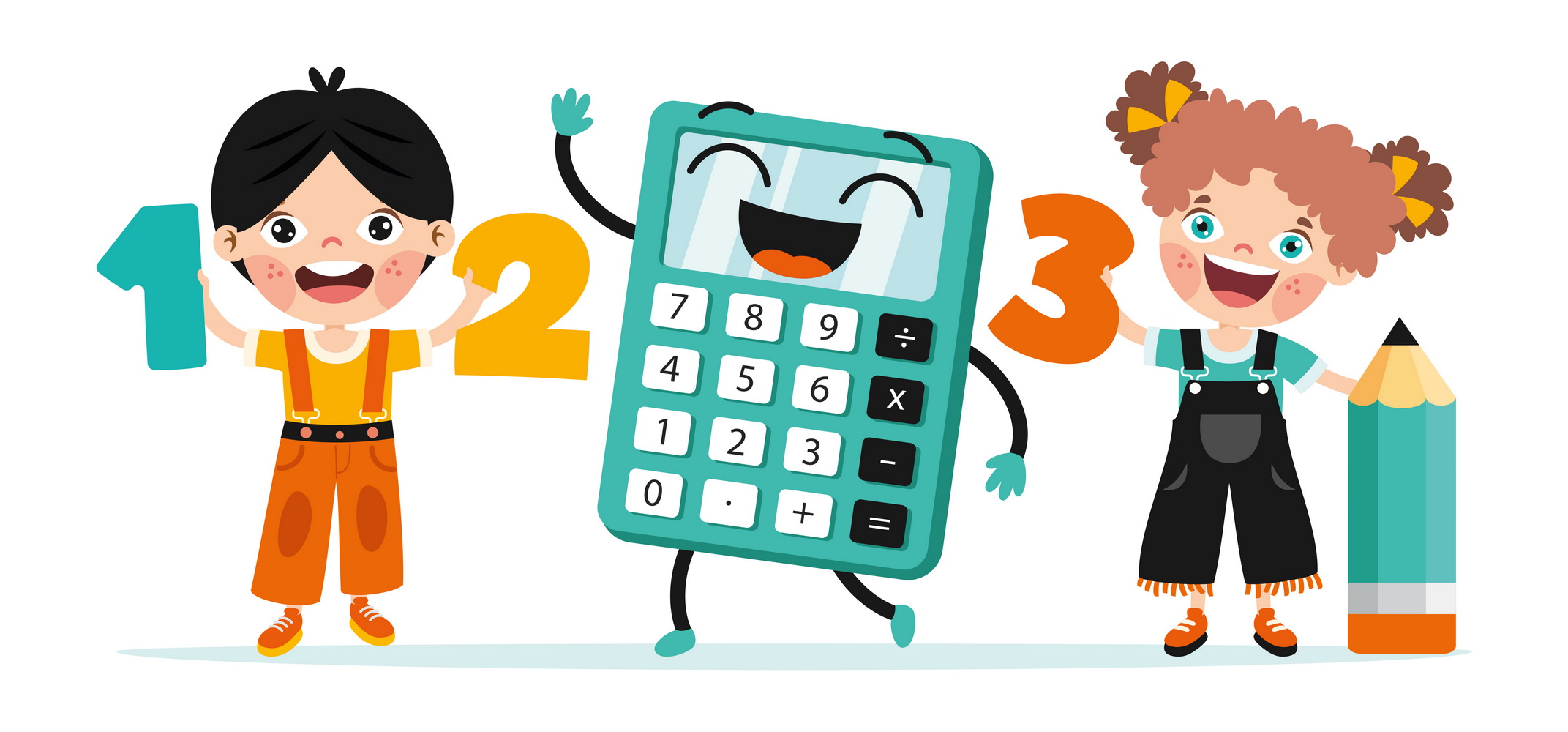Normal Time Worksheets for Ages 7-8
5 filtered results
-
From - To
Our specialized "Normal Time Worksheets for Ages 7-8" provide an engaging and effective way for young learners to master time-telling skills. Designed with fun and interactive tasks, these worksheets cover essential time-telling elements including reading the clock, understanding AM and PM, and solving real-life time problems. Perfect for both classroom and home use, they aim to boost children's confidence and math proficiency, ensuring they understand both analog and digital clocks. Tailored for the 7-8 age group, these resources offer a structured and enjoyable learning experience, fostering a strong foundation in time comprehension. Download today for productive practice!
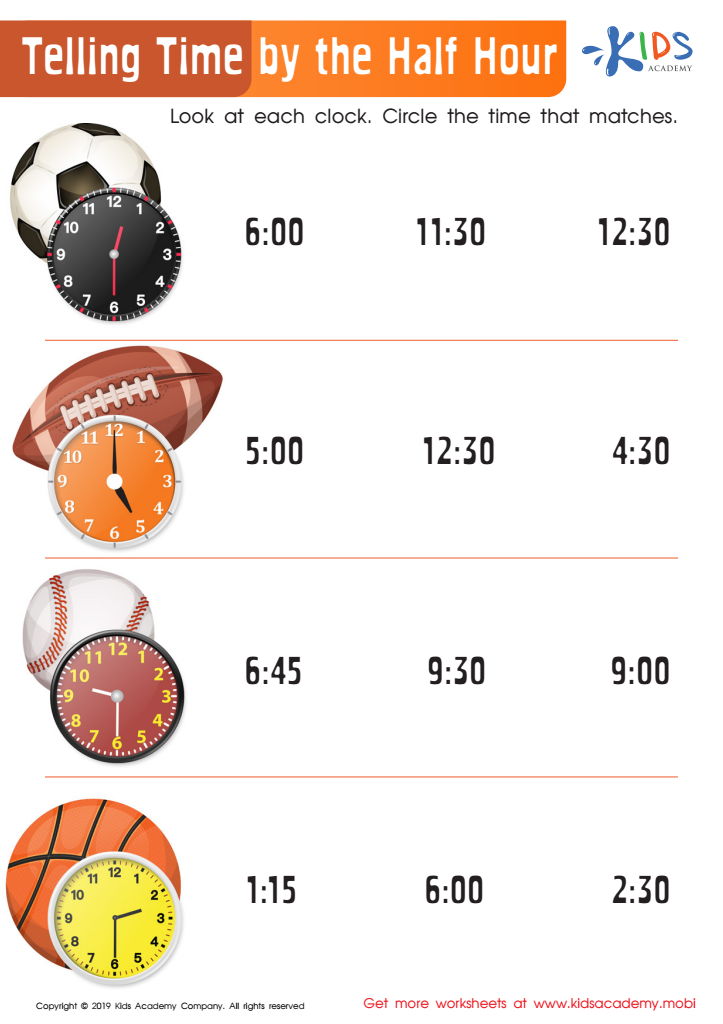

Telling Time by the Half Hour Worksheet


Years Worksheet
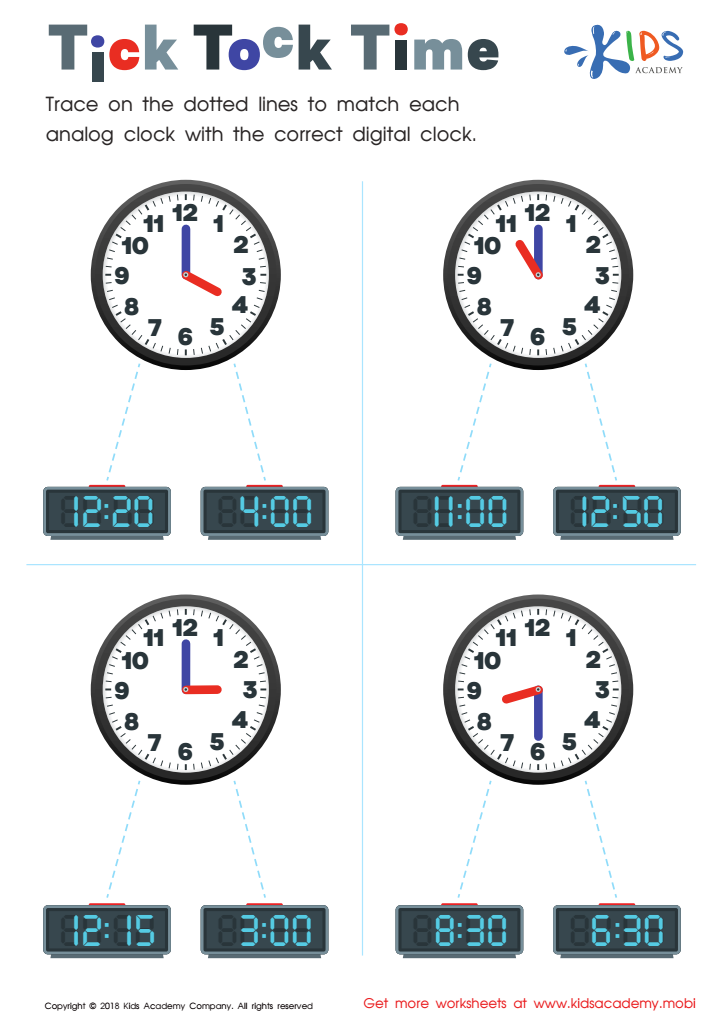

Tick Tock Time Worksheet
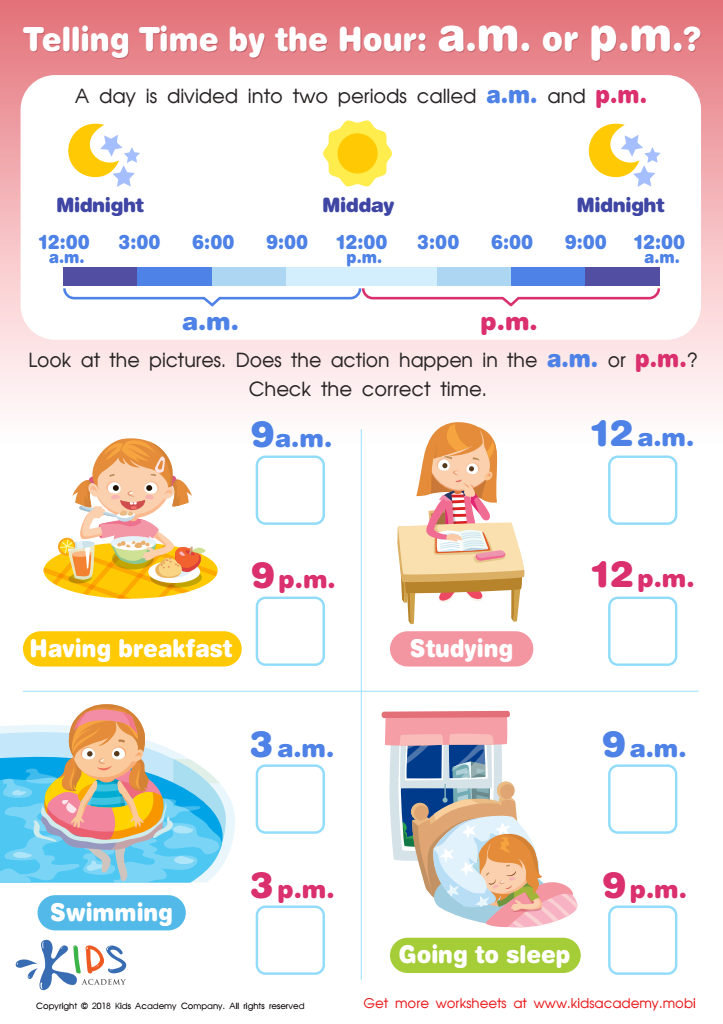

Tilling Time by the Hour: a.m. or p.m.? Worksheet
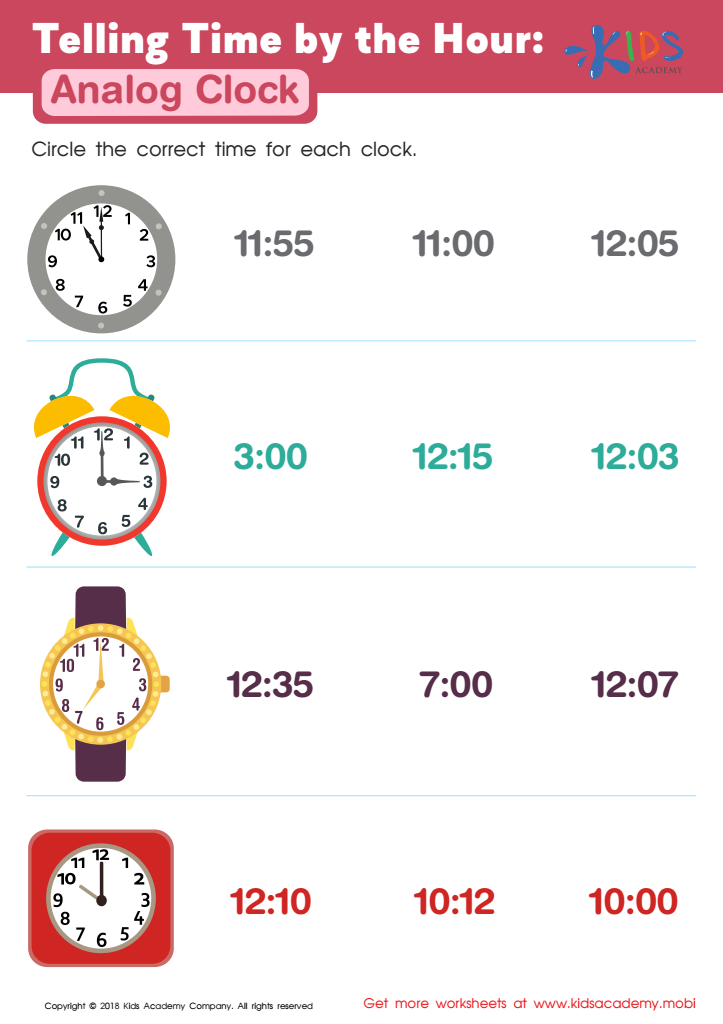

Telling Time by the Hour: Analog Clock Worksheet
Normal time is an essential concept for children ages 7-8 as it relates to the healthy development and well-being of kids in this critical learning stage. For parents and teachers, understanding and valuing normal time means recognizing and respecting the daily routines that children need to grow and thrive.
Firstly, normal time ensures children get adequate sleep, which is fundamental for their physical growth and cognitive functioning. A consistent bedtime routine can improve behavior, attention span, and learning ability in school.
Secondly, normal time includes scheduled meals and snack times, which are key for maintaining energy levels and ensuring proper nutrition. Children learn best when they are neither hungry nor overly full.
Moreover, normal time allows for structured and unstructured activities, vital for cognitive and social skills development. Regular patterns help children know what to expect, providing security and reducing anxiety. This helps in class management for teachers and smoother days at home for parents.
Lastly, having a normal time helps cultivate responsibility and independence. When children understand the routine, they learn to manage their time better and develop organizational skills.
In essence, helping children adhere to normal time promotes a balanced lifestyle where they can effectively learn, play, rest, and grow, making it a fundamental parental and educational focus.

 Assign to the classroom
Assign to the classroom
